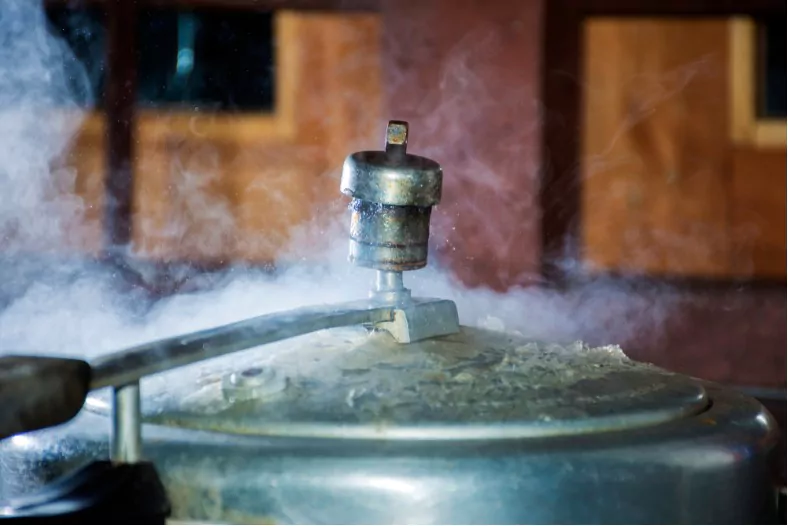How To Cook In Pressure Cooker For Every Cuisine

Pressure cooking is no longer a thing of the past. With modern pressure cookers making a grand entry into our kitchens, the art of cooking food using hot steam has become easier, quicker, and tastier. Whether you’re a newbie wondering how to cook in a pressure cooker or a pro looking for more advanced pressure cooker recipes, we’ve got you covered.
1 Introduction to Pressure Cooking
When you think about cooking methods, you probably consider stovetop, oven, or even microwave cooking. But among the array of cooking methods available, pressure cooking stands out for its efficiency, speed, and quality of cooked food.
2 How does a pressure cooker work?

The concept is simple. Pressure cookers, as the name suggests, cook food using high pressure inside a sealed pot with lower heat. As you heat the pot, the liquid inside (water, broth, etc.) begins to boil, creating steam. This steam can’t escape because of the sealed lid. Consequently, steam pressure builds up inside the cooker. When this happens, the boiling point of the cooking liquid rises, allowing the food to cook at higher temperatures without burning. This unique process not only speeds up the cooking time but also ensures your food retains more of its nutrients compared to other methods.
3 Getting Started: Using a Pressure Cooker Properly
- Know Your Equipment: Modern pressure cookers come in two main types: stovetop and electric pressure cookers. The stovetop models are placed on your burner, while electric ones, like the popular Instant Pot, come with their own heating element. Make sure to read the owner’s manual to understand your cooker’s features and safety measures.
- Preparing Ingredients: Before you even begin putting your ingredients inside, ensure they are clean and cut as per your pressure cooker recipes. For dry beans, they should be soaked overnight to ensure even cooking. Meat, on the other hand, might need some preliminary browning for added flavor.
- Add Enough Liquid: One of the essential steps in learning how to cook in a pressure cooker is ensuring you have enough liquid to create steam. The minimum amount varies among different models, but generally, a half to one cup of liquid is a good rule of thumb. Water, broth, or tomato sauce are commonly used liquids.
- Sealing the Lid: Ensure the lid is sealed correctly. This is crucial for safety reasons. Many modern pressure cookers come with safety features that prevent them from opening under pressure. Still, always double-check.
- Cooking Process: Start on high heat to build up steam pressure. Once the desired pressure level is reached, lower the heat to maintain it. Your cooking time begins once the cooker reaches the desired pressure.
- Releasing Pressure: After the food is cooked, release pressure either naturally by letting the cooker cool on its own or using the cold water release method (placing the cooker in a sink of cold water) or by using the quick-release feature, if available. Always stand back and use caution when releasing steam.
4 Pressure Cooker Recipes and Cooking Times

Pressure cookers are versatile. From rice and beans to meat, vegetables, and even fish, a myriad of dishes can be made. The key is knowing the cooking times for different food items.
- Rice: Generally takes about 10-15 minutes.
- Beans: Depending on the type, they can take anywhere from 8-40 minutes.
- Meat: Depending on the thickness and type, meat can take 10-90 minutes.
- Vegetables: Most vegetables will be done in 2-8 minutes, depending on their hardness and size.
- Fish: Fish dishes are quick, often taking just 3-8 minutes.
Instant Pot recipes have made pressure cooking even more accessible, with many step-by-step instructions available online for a variety of dishes.
5 Benefits of Pressure Cooking
- Energy Efficient: Pressure cooking is quicker, meaning you use less energy compared to stovetop or oven cooking.
- Nutrient Retention: The quicker cooking process and lesser water needed mean more nutrients are retained in your food.
- Safety: Modern pressure cookers have numerous safety features, ensuring accidents rarely happen if used correctly.
6 Tips and Tricks for the Best Results
- Don’t Overfill: For safety reasons and the quality of the cooked food, never fill the pot more than two-thirds full.
- Adjust Cooking Liquid: If you’re adapting a regular recipe for the pressure cooker, reduce the amount of liquid, as there’s less evaporation than with other cooking methods.
- Use Oil Sparingly: Too much oil can interfere with the pressure creation.
- Listen to Your Cooker: If it’s making more noise or hissing more than usual, lower the heat.
7 Wrapping Up
Cooking in a pressure cooker may seem daunting initially, given the learning curve involved. However, with a few tries and some experimentation, it’s bound to become your favorite method. Dive into the world of pressure cooking, explore instant pot recipes, and marvel at the efficiency and quality of the dishes you create. Don’t forget to check comments and reviews when you look up recipes online – they can offer valuable insights and modifications.
Remember, practice makes perfect. Soon, you’ll be wondering how you ever cooked without your trusty pressure cooker. Happy cooking!
Community Q&A
About This Article
This article has been viewed 323 times.



